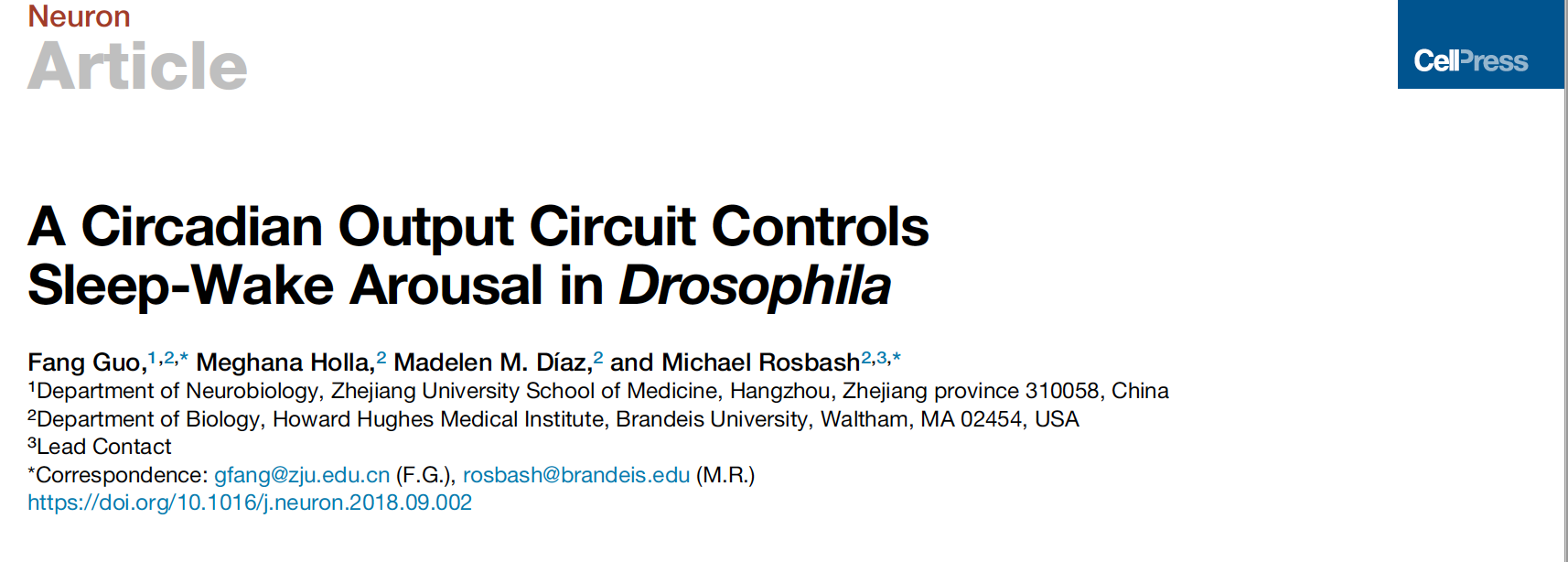Dr. Fang Guo's lab published a paper addressing the mechanism of how circadian neural circu
On September 27, 2018, a research paper entitled "A Circadian Output Circuit Controls Sleep-Wake Arousal in Drosophila" was published on

Sleep-like phenomena can be observed in many organisms including nematodes, fruit flies, mice, and humans. These different types of organisms exhibit the similar characteristics of sleep, such as reduced locomotion, decreased arousal to inhibit response to external stimulus, neurons in certain brain regions exhibit specific oscillation patterns. The circadian rhythm and sleep are biological phenomena that have evolved together. Although much is known about the molecular and neural mechanisms that regulate these two behaviors, how circadian neurons outputs onto sleep circuits in any organism is mostly unknown, making this a very important question in the sleep field.
The study found that the Drosophila circadian circuit contains distinct groups of interacting neurons that give rise to diurnal sleep-wake patterns. Among them, a small cluster of dorsal neurons (APDNs) have a unique projection pattern. The posterior axons inhibit the locomotion-promoting circadian neuron LNds. The anterior-projecting axons “exit” the circadian circuitry and communicate with the homeostatic sleep center in higher brain regions to regulate sleep and sleep-wake arousal. These APDNs connect to a small, discrete subset of tubercular-bulbar neurons, which are connected in turn to specific sleep-centric ellipsoid body (EB)-ring neurons of the central complex. Remarkably, activation of the APDNs produces sleep-like oscillations in the EB and affects arousal. The behavior data indicate that this APDN-TuBu-EB circuit temporally regulates sleep-wake arousal in addition to the previously defined role of the TuBu-EB circuit in vision, navigation, and attention.
The

Dr. Fang Guo, an investigator in the Department of Neurobiology, Zhejiang University School of Medicine, is the first author of the paper. Dr. Guo Fang and Dr. Michael Rosbash from the University of Brandeis (the laureate of the 2017 Nobel Prize in Physiology or Medicine) are the corresponding authors of this paper.

